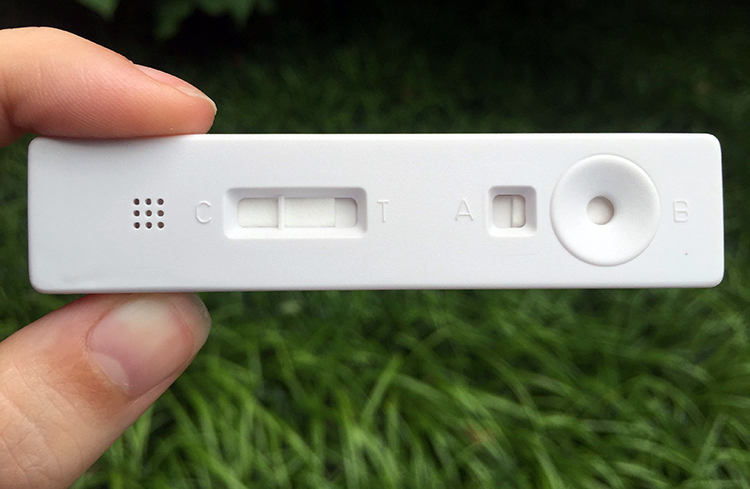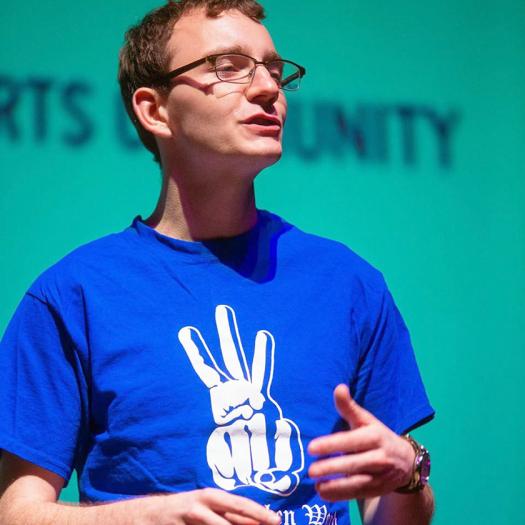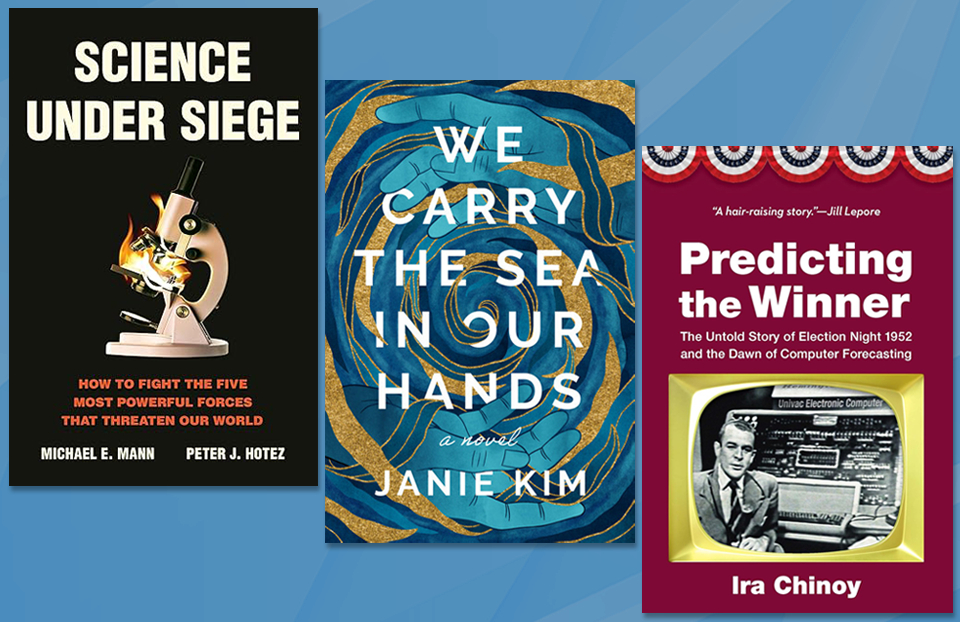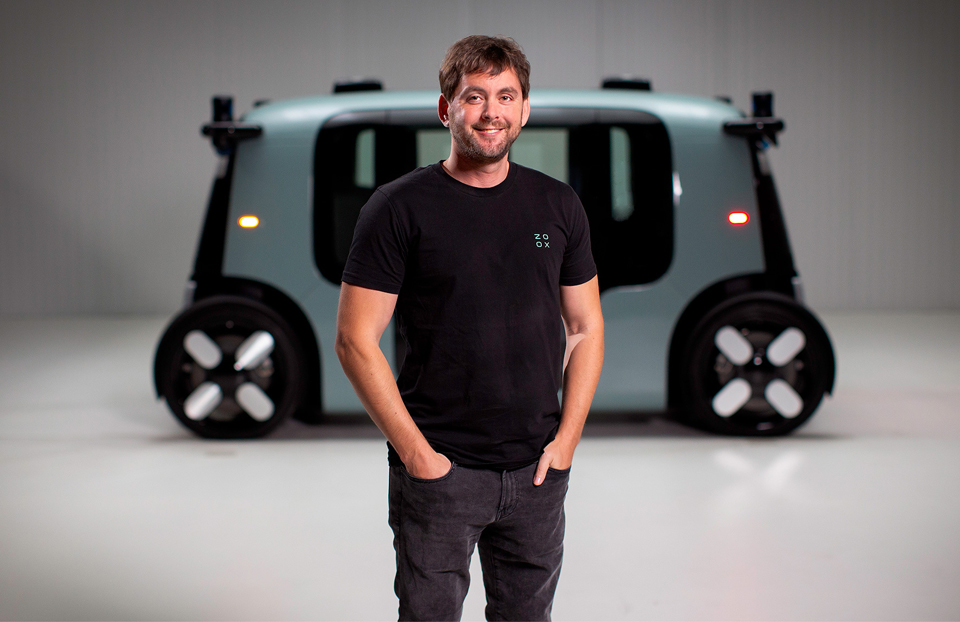Intel ISEF alum creates sickle cell disease testing device

Intel ISEF alumnus Kevin Cyr developed a device that affordably tests for sickle cell disease. He is applying for a patent for the device. Kevin also works on communicating science and research to others through spoken word poetry. He performs in Vanderbilt Spoken Word open mics.
Kevin told the Society for Science & the Public how he researched and developed the accurate sickle cell disease testing device.

You recently created an affordable and accurate sickle cell disease testing device. Can you describe how you created this, the research involved, and the difficulties you faced?
The hardest part of developing a new diagnostic is developing the methods necessary to test it. There is no textbook you can read or paper you can cite that gives the proper experiment you need to conduct. Instead, you have to design, develop, and eventually test every experiment you do. The issue is multiplied when you consider applying a diagnostic towards low-resource settings. You have to ask yourself things like “if the results look like this, would someone read that correctly?” or “if the device needs that in order to function, will it become too expensive?”
The research involved in creating the device has taken place over the course of a year and a half. Initially, I was interested in developing new ways to monitor coagulation disorders, or coagulopathy, in trauma patients. Over time, I realized that the methods of detection I was investigating for coagulopathy would serve a better purpose in detecting sickle cell disease in low-resource settings. Once I made the connection, I found that the difficulties I was facing became easier to approach and I had a clearer direction with where my research needed to go in order to develop a viable product. This is one of the largest challenges in research — working toward an end goal that you can actually reach. In this case, I was spurred by the development of a product to fill a particular niche. Through that goal, I was able to guide every step of my research in an effort to make as robust of a platform as I possibly could.
Describe how this device works.
The device works using the simple phenomenon of capillary flow. Sickle cell blood is considered to be highly viscous, whereas normal blood is not. Because of this unique physical difference in the two fluids, we can differentiate between normal and sickle blood using specialized paper membranes. The membranes can wick the blood sample and, based on their porosity, enable normal blood to flow through, whereas the highly viscous and clumped sickle cell blood has a more difficult time getting through. The way this works is a small droplet of blood is obtained from a patient via a finger-stick, like the ones many diabetic patients use. The droplet of blood is mixed with a buffer solution and placed into the device to flow down a specialized paper membrane. How far the fluid moves through the membrane is dependent on the viscosity of the solution. More viscous samples, like those from sickle cell patients, will not flow as far and thus produce an easy-to-read result. Each device costs less than $0.50 and the results are available within about five minutes. These factors are important for the use of the device in low-resource settings, where a healthcare worker could rapidly evaluate if a patient has the disease.
What has the response been to this device?
The device has received an overwhelming response of excitement and interest. I was able to pitch the device to the CEO of Oasis Diagnostics, a company focused on saliva diagnostics, at the end of the summer and began working with them to further test the device before moving it into the clinic. Due to the novel testing method used in the device, there has been talk of intellectual property, so I am currently working to file a patent through the Vanderbilt Center for Technology Transfer as the primary inventor.
Why is this device (and affordable sickle cell disease testing) important to provide to doctors and healthcare professionals?
Sickle cell disease is the world’s leading genetic defect, with more than 30 million people affected globally, according to an article on sickle cell anemia in PLOS. Most of those affected are located in sub-Saharan Africa, where testing for the disease is extremely limited. As a result, our ability to combat the disease is hindered and it is estimated that nearly 100,000 infants die every year due to non-diagnosis. Since sickle cell disease is a manageable disorder, if we can effectively screen patients at an early age we’ll be able to effectively combat the disease. Effective screening could save up to 14 million newborns by 2050, according to the article; however, we currently lack the methods to even initiate screening programs.
This device, which can be used in a point-of-care setting, could readily give insight into the areas most afflicted by sickle cell disease and further inform efforts to control the disease in those regions. Right now, the issue is finding the disease in time to enable treatment. Such a device could rapidly test for the disease without placing strain on existing healthcare infrastructure.
You thanked Intel ISEF in a Facebook post about inspiring this pursuit. How did your experience with Intel ISEF encourage you to research, and ultimately create, this device?
I participated in Intel ISEF as a senior in high school, preparing to go off to college. I always knew that I had a strong passion for research, but I didn’t know what exactly I wanted to do once I went to school. Once I attended Intel ISEF and connected with students from all over the world, I knew I needed to follow my passion for research further. Intel ISEF showed me the breadth of scientific research I could participate in and helped guide me toward working on global health diagnostics.
What was your most memorable experience at Intel ISEF 2013? Can you provide a short description of your research project?
While I remember many moments at Intel ISEF, my most memorable experience was during one of the breakout sessions when I ran into a student from Costa Rica. I introduced myself to him, saying my name was Kevin. He turned to me with a glint in his eye and said his name was also Kevin. A student walking by from Puerto Rico overheard us and exclaimed that his name was also Kevin! So there we were, three different Kevin’s, all of us at Intel ISEF, discussing our projects together as best we could. I remember that moment because of the happenstance, and because of how similar it is to how I think Intel ISEF is. Every student there is connected by something, not necessarily a name, but a passion. My 2013 Intel ISEF project was centered on tissue engineering human lungs using stem cells. I worked with a laboratory at the University of Texas Medical Branch to decellularize rat lungs and replace the existing cells with human stem cells. The project sparked my interest in biomedical research and enabled me to learn more about the body than I ever thought I would.
Has your involvement in Intel ISEF influenced you to pursue other opportunities in STEM?
Intel ISEF helped push me to continue my research and explore the growing startup scene. I have become extremely interested in the startup culture that has developed over the past several years. At Intel ISEF I remember several talks centered on taking a project from the laboratory to the marketplace. I think this helped me to become involved with Nanoferix, a Nashville startup working on new drug delivery methods. The company brought me on as an intern when I was a sophomore, and ever since I have become integrated with a team of industry experts working on developing new therapies.
You joined Vanderbilt University’s Vanderbilt Institute for Integrative Biosystems Research and Education (VIIBRE) in your freshman year. Can you describe this institute and the research you’re surrounded by?
I came to Vanderbilt knowing I wanted to be a part of research and quickly joined the Searle-SyBBURE Undergraduate Research Program, a program designed for students to engage in multi-year research projects. The experience has been phenomenal for me and enabled me to explore projects with the depth and detail that science truly requires. As part of the Searle-SYBBURE program, I have been working within the Vanderbilt Institute for Integrative Biosystems Research and Education, a group focused on the development of microfluidic devices and organ-on-a-chip systems. I believe their research helped inspire my work into fluids and low cost diagnostics, as the two fields share many similarities. The faculty that have helped guide me, Christina Marasco and John Wikswo, have been supportive at every step of the process. They push me and the other students to think at a higher level than expected from a typical undergraduate. As a result, I often find myself asking questions that my instructors in the classroom aren’t used to. I believe it’s the ability to ask the difficult questions that signals true learning is occurring.
You’re also involved in Vanderbilt Spoken Word open mics. Is science an inspiration for your poetry or do you perform spoken word as a way to take a break from science?
My spoken word pieces are notoriously lighthearted pieces that tend to make fun of my penchant for science and math. I often use spoken word as a way to break from the science and instead focus on the communication that is necessary with every scientific endeavor. Communication is just as crucial to science as the statistics and methods used within the experiment. I like to work on my ability to effectively communicate through spoken word. It’s a rich medium for discussing heavy topics and asking difficult questions in a way that receives a response, either through the audience snapping during a piece or a person talking to you after a show. The ability to say something that others may find meaning in is as important to me as developing a device that might help someone else.
What is your advice to young people interested in science and math?
For those interested in science and math, read. Read books, articles, Scientific American, Popular Science, the news, no matter what it is just read. I think too much emphasis is placed on memorization and equation solving when the true learning comes from reading, and thinking, and understanding what others have done and said. In this way, you can readily prepare and enable yourself to pick up any of the STEM fields, and more importantly, you can find those that truly inspire you.


